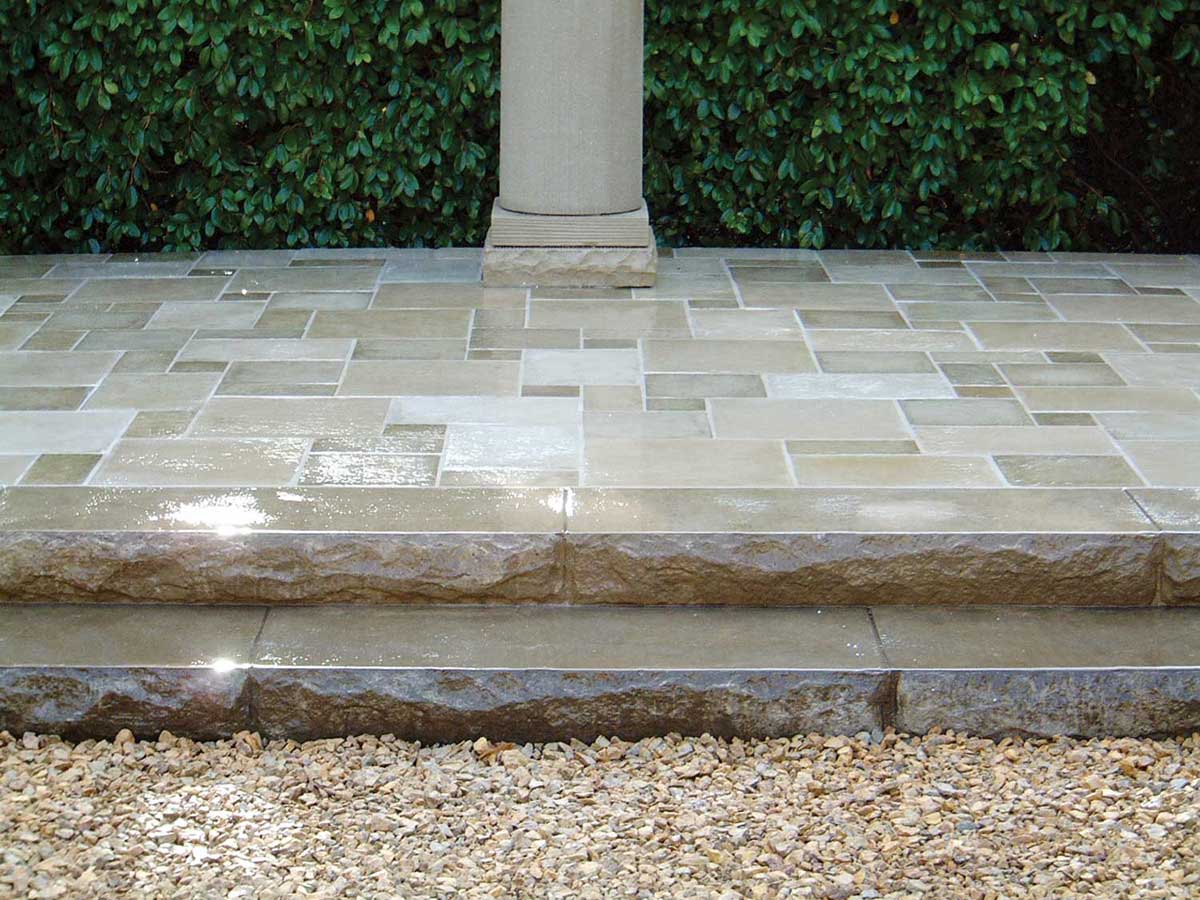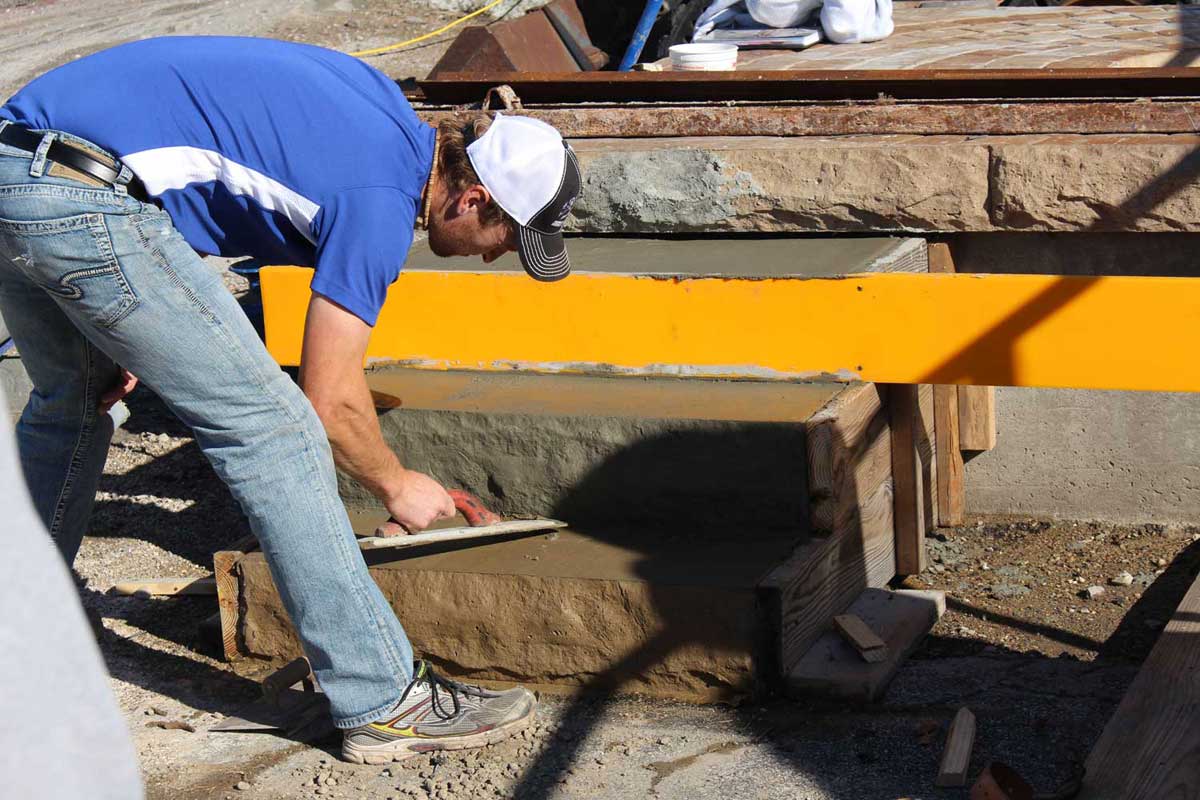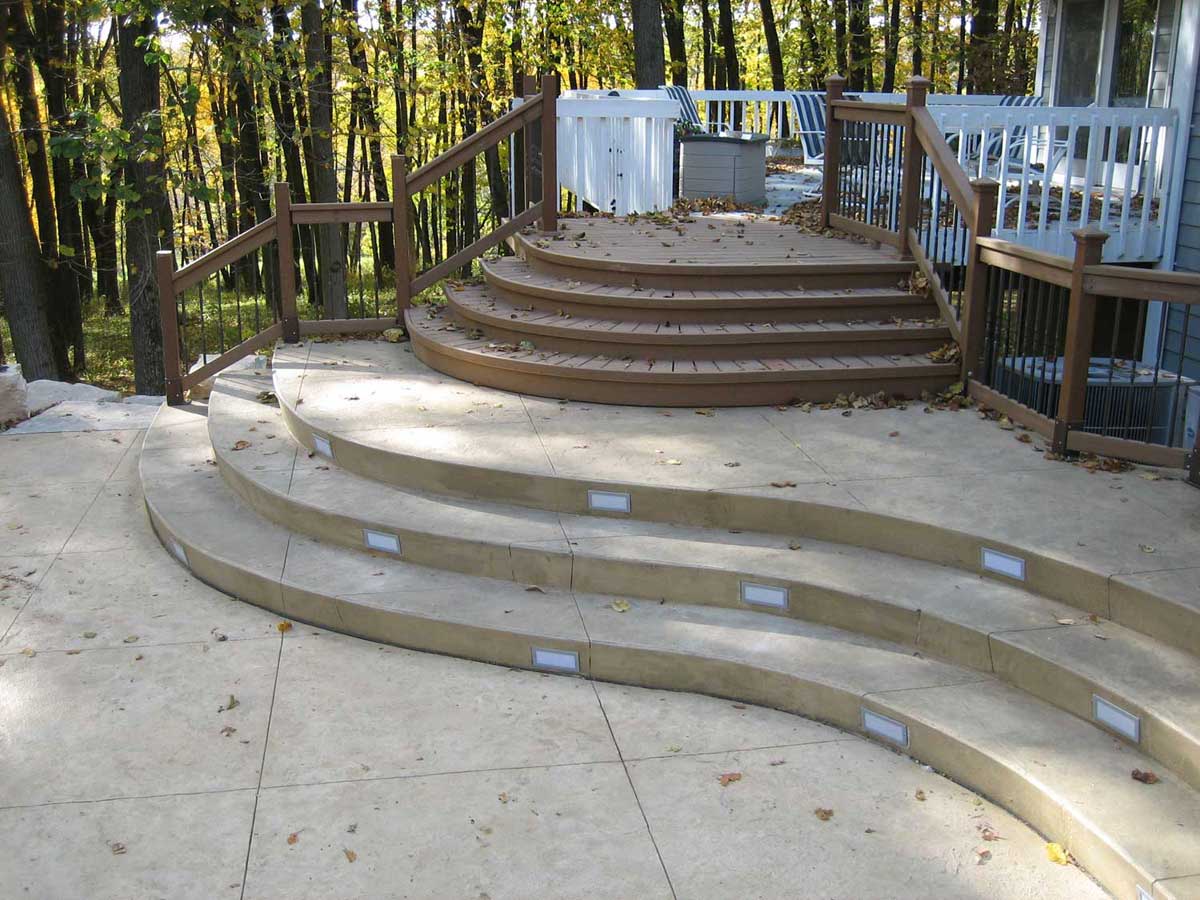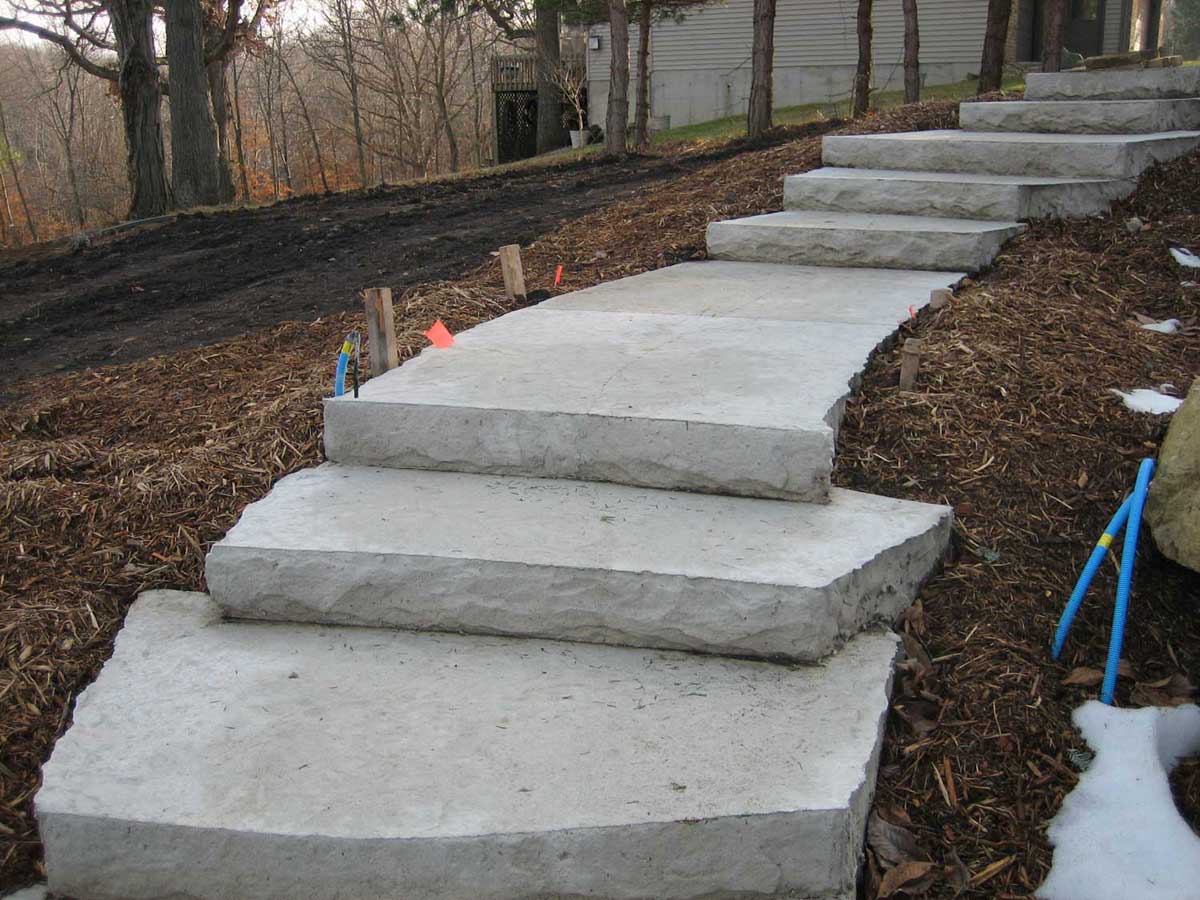How To Design Stamped Concrete Steps
Good stamped concrete is part of an overall design. Placing stamped concrete driveways and patios with no regard looks haphazard. Textured concrete needs to be carefully incorporated into the overall property design. This mindful design is what sets the best contractors apart.
Stamped concrete steps are one of the many ways to incorporate stamped colored concrete into the whole project. Traditional wooden stairs or precast concrete stairs break design flow. They don’t match the stamped colored concrete they get placed on. This can make the entire project look sloppy. For a well designed appearance, stamped concrete stairs are necessary whenever there is a grade change.
From a structural perspective, decorative concrete stairs aren’t too different from regular cast concrete stairs. Use a mix design that meets the requirements of the region. Use best practices for selecting the rise and run of the steps. In most cases, the tread should be between 10 and 13 inches deep with a rise of 6 to 8 inches high. The rise and run should be equal between all steps to avoid tripping hazards. A useful article on this topic can be found here.
Brickform has a wide range of stamped concrete coloring products that can be used building stamped concrete steps.

How to Color Concrete Steps
You can use most of the same materials on steps as you would for regular stamped concrete coloring. Integral colors tend to work better than Color Hardener. Integral color colors the concrete throughout so the runners and risers are the same shade. Add highlight color to the runners by using Antique Release or Antique-It. Stains are perfect for all surfaces on concrete steps. Water based stains are easy to apply and offer a wide range of creativity.

How to Texture Concrete Steps
Texture the step face using form liners. Form liners are tools specially designed for this purpose. They are sized to fit the most common forms. Attach them to the stair forms, and cast the concrete as usual. Make sure to vibrate the concrete to close any gaps and get a good texture. When the concrete is set, remove the liner with the forms to reveal the vertical texture. This creates a “live edge” texture that works well with stone and slate stamped concrete. Here’s how to use form liners.

Texture the runner just as you would other stamped concrete. Seamless skins work great for this. They have no pattern so they are easier to place. Seamless texture skins can also more easily stamp right up the the edges of the forms. If using a stamp, use flexible or floppy version for greater ease. Avoid using dramatic or heavy textures. They may be a tripping hazard on stairs.
Use stamped concrete stairs to connect multi-level patios. Stamped concrete steps are also good for connecting above-grade houses with on-grade concrete. Textured concrete stairs are a completely necessary component for complete and classic designs. They are the attractive and durable way to change elevation. Whether it is one step or a whole flight of stairs, textured concrete stairs are a wise choice.



